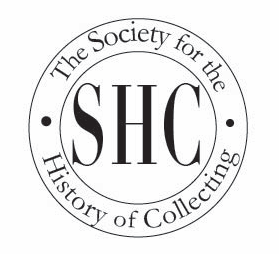
The Society for the History of Collecting
Invites you to its Business Meeting
Thursday, March 3 2022 at
9am PST // 1pm CST // 2pm EST // 7pm GMT // 8pm CET
On the occasion of the annual College Art Association conference, the Society for the History of Collecting is pleased to dedicate its Business Meeting to provide a forum for the work of emerging scholars in the field.
Sara Tonni, University of Trento: “Antichi maestri italiani al Thorvaldsens Museum: il collezionismo di un artista danese nella Roma del primo Ottocento”
This doctoral project aims to create an updated catalogue of the collection of Italian Old Master paintings formed in Rome by the sculptor Bertel Thorvaldsen at the beginning of the 19th century and now stored at the museum dedicated to him in Copenhagen. It has two cornerstones: on the one hand, the study of singular artworks, on the other, the investigation of Thorvaldsen’s role and incentives as a collector. The purpose is to elucidate the context around each purchase, improving our understanding of the sculptor as a collector of Late Medieval, Renaissance, and Early Modern paintings. This research will allow us to understand how and whether Thorvaldsen’s collecting of Old Master paintings influenced or reflected his own vision of art, but also—given his role as a central figure in the European art world of the day—the vision of art in his Roman social circle and the cultural milieu more broadly.
Blair Brooks, Graduate Center, CUNY: “Heinz Berggruen: Dealing and Collecting Modern Art in the Shadow of World War II”
Heinz Berggruen (1914-2007) was one of the most influential art dealer-collectors of the 20th century. A German Jew forced into exile at age twenty-three, he based his business in Paris in the postwar decades. At Galerie Berggruen (1947-80), he promoted European modernism despite the international rise of American art. He simultaneously built a collection of works by the protagonists of what he considered “classic” modernism: Paul Cézanne, Alberto Giacometti, Paul Klee, Henri Matisse, Pablo Picasso, Georges Seurat, and Vincent Van Gogh. Berggruen lived long enough to see Germany liberated, divided, and reunited, before leaving his collection to his native Berlin, despite—or because of—this tortured history. Through his biography, writings, and marketing of canonical artists who were fellow refugees or immigrants, this dissertation contributes to studies of exilic modernism and the cultural politics of historical memory
Lassla Esquivel, University of Leeds: “The Role of Private Museums in Emerging Markets. Case Studies: Jumex Collection and Coppel Collection, Mexico.”
This research project will analyze the ways in which private museums affect the infrastructure of the contemporary art scene on both national and international levels in emerging markets through the example of different models in Mexico. Using the examples of Jumex and Coppel Collections, the project will examine private museums’ ambivalent position as validating entities from an institutional perspective and as market forces simultaneously. It will propose looking at these institutions as “hybrid institutions or hybrid models,” and seek to understand what happens at the intersection between the symbolic and economic spheres of the art. This study’s relevance resides in understanding the process in which collections like Jumex and Coppel evolve into private museums, and how they are embedded in developing artistic hubs or emerging art markets, while exploring the shift in collecting practices that this sort of institution has brought into the art world and the market since the 1990s and 2000s.
Alice Whitehead, Queen’s College, University of Cambridge: “Shugborough Hall, the Anson family and the eighteenth-century Atlantic economy”
Shugborough Hall was the seat of the Anson family from the seventeenth-century. Located in Staffordshire, England, in 2016, the house came into the possession of the National Trust. My thesis reflects on the charity’s interest in “Global Connections” by focusing on the relationship between the Anson family and the Atlantic world in the eighteenth century. In examining the family’s landholdings in South Carolina, their connections with the Royal Navy and their collecting habits, I investigate the ways in which the Atlantic world shaped life at Shugborough Hall.
Members will receive a flyer with the link to the talk at least two days before the event.
Nonmembers should register by emailing: events@societyhistorycollecting.org
